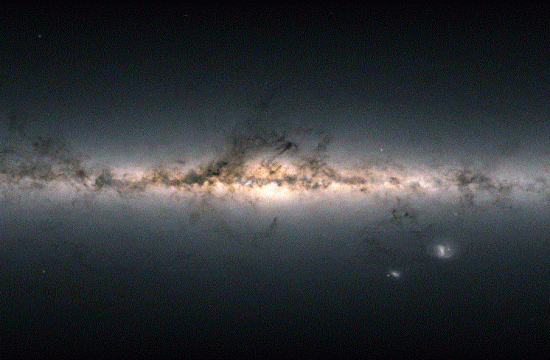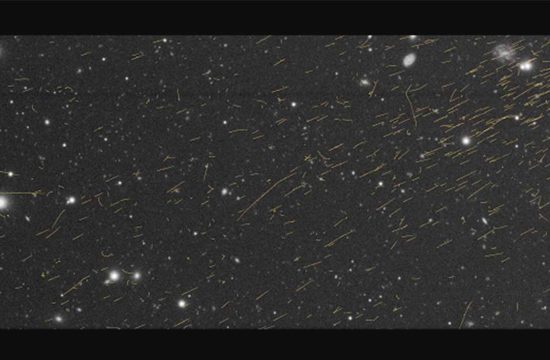
At first glance, this image may resemble red ink filtering through water or a crackling stream of electricity, but it is actually a unique view of our cosmic home. It reveals the central plane of the Milky Way as seen by ESA’s Planck satellite and the Atacama Pathfinder Experiment (APEX), which is located at an altitude of around 5100m in the Chilean Andes and operated by the European Southern Observatory.
This image was released in 2016 as the final product of an APEX survey mapping the galactic plane visible from the southern hemisphere at submillimetre wavelengths (between infrared and radio on the electromagnetic spectrum). It complements previous data from ESA’s Planck and Herschel space observatories.
Planck and APEX are an ideal pairing. APEX is best at viewing small patches of sky in great detail while Planck data is ideal for studying areas of sky at the largest scales. It covers the entire sky – no mean feat. The two work together well, and offer a unique perspective on the sky.
This image reveals numerous objects within our galaxy. The bright pockets scattered along the Milky Way’s plane in this view are compact sources of submillimetre radiation: very cold, clumpy, dusty regions that may shed light on myriad topics all the way from how individual stars form to how the entire Universe is structured.
From right to left, notable sources include NGC 6334 (the rightmost bright patch), NGC 6357 (just to the left of NGC 6334), the galactic core itself (the central, most extended, and brightest patch in this image), M8 (the bright lane branching from the plane to the bottom left), and M20 (visible to the upper left of M8). A labelled view can be seen here.
Planck was launched on 14 May 2009 and concluded its mission in October 2013. The telescope returned a wealth of information about the cosmos; its main aim was to study the Cosmic Microwave Background (CMB), the relic radiation from the Big Bang. Among other milestones, Planck produced an all-sky map of the CMB at incredible sensitivity and precision, and took the ‘magnetic fingerprint’ of the Milky Way by exploring the behaviour of certain light emitted by dust within our galaxy.
Its observations are helping scientists to explore and understand how the Universe formed, its composition and contents, and how it has evolved from its birth to present day.
APEX is a collaboration between the Max Planck Institute for Radio Astronomy, the Onsala Space Observatory, and the European Southern Observatory, ESO. The telescope is operated by ESO.







